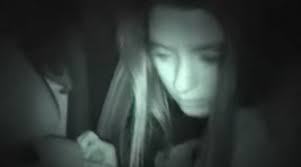Originally posted on December 26, 2022 @ 2:33 pm
Do you dare read Teresa Fidalgo’s terrifying true story? Social media’s resident ghost has been frightening users for years, and her tale is surprisingly accurate.
Teresa Fidalgo was a woman who perished in a vehicle accident back in the 1970s, and it appears that ever since then, her ghost has been stalking social media.
Some claim Teresa Fidalgo will follow you around for the rest of the time if you don’t repost this message. So, are you willing to take a chance?
Since her narrative has been circulated online for such a long time, many people now think it is actually genuine.
Now that you know the real story behind her tale, you can move on. In order to ascertain whether Teresa Fidalgo’s legend is accurate, we shall examine it in this article.
The tale of Teresa Fidalgo serves as a grim warning that some online claims are simply too good to be true.
Do not copy or paste this content without permission. The tragic tale of Teresa Fidalgo will undoubtedly live on on social media and Instagram for years to come.
Teresa Fidalgo Story Explained
The Teresa Fidalgo genuine search results are more of a celebrated archive of many regurgitations and reworkings of a narrative that begins with Portuguese producer David Rebordo’s popular video “A Curva” than they do with Teresa Fidalgo’s physical presence.
The video shows companions giving a hitchhiking to a woman they claimed to be Teresa Fidalgo while driving through the highlands.
Strangely quiet for a while, the new traveler finally begins to identify the location of where she “died” on the road.
The camera immediately turns back to the woman to show her face before the car crashes, completely unnoticed.
Over the years, a great variety of these “Stories of the White Lady” have been created, but something about the specifics of “Teresa Fidalgo” and her purported connections to an actual disaster that occurred on a Portuguese boulevard has exploited impressionable children.
Who Is The Author Of The Story Of Teresa Fidalgo?
Teresa Fidalgo is allegedly a made-up figure from a Portuguese film. Many claim that David Rebordao, a Portuguese content creator, is the author of the narrative. The legend has it that Teresa was killed in an automobile accident in 1983 in Sentra, Portugal.
With the intention of finding a few locations to film various scenes for his film, “A Curva,” Rebardao travelled with a large group of his pals. They came across this mysterious-looking girl on the street.
After the film’s release, the director acknowledged that the tale was not based on actual events.
The director told Channel TVI that he was taken aback by the tale’s enduring appeal and the fact that so many people still hold it to be true.
Teresa is allegedly communicating with people via email and numerous social media platforms, including Facebook and Instagram.
The Truth Behind The Teresa Fidalgo Ghost Story
For social media users all across the world, Teresa Fidalgo has turned into the stuff of nightmares.
Teresa, a young woman, allegedly perished in an automobile accident. Her spirit now stalks social media, showing her in uploaded images and videos.
She is said to follow you for the rest of your life if you don’t tell her tale.
For years, people have been using Teresa’s tale online to frighten other people. The most typical method is to share Teresa’s image or video along with a message that reads something like:
I’m Teresa Fidalgo, and I’ll sleep with you forever if you don’t post this on 20 other images.
The page described Teresa Fidalgo’s “hoax” in another Facebook post as follows:
“A girl’s mum passed away 29 days after she was ignored. You can look me up on Google.
This statement is frequently accompanied with a picture or video of Teresa’s spirit, who is reported to make appearances in uploaded images and videos.
The Teresa Fidalgo story has succeeded in frightening people all around the world even if it is really an urban legend.
The Incident
The incident concerning the car crash near Sentra, Portugal, where Teresa Fidalgo, a young woman, perished started in 1983. On July 12, 2003, the video leaked online and went popular after 20 years of this occurring.
In the viral video, three friends were driving in the dead of night while chatting about ghosts and other supernatural phenomena when they suddenly saw a young woman approaching from the opposite side of the road.
She is escorted into the car for the journey. While they are traveling, the new girl points out a certain site and tells the other friends that this is where she was killed in a car accident, which has an unusual affect on the other friends.
She cries while having blood all over her face when the car hits a tree.
David was one of the three riders who miraculously lived, but he was never able to explain what happened that night. The other two riders, a guy and a woman died. Teresa’s body was never discovered.
Police said that in 1983, a woman by the name of Teresa Fidalgo lost her life in a collision there.
How Teresa’s Story Has Become Popular On Social Media
Millions of people have shared Teresa Fidalgo’s story on social media.
The most popular way to distribute it is as a chain letter, which warns readers that Teresa will haunt them if they don’t spread the word.
The assertions claimed in the report are unsupported by any proof, yet that hasn’t stopped it from rising to the top of the list of online fake news.
So why do individuals continue to spread Teresa’s tale?
Many think it’s because the story is just plain unbelievable. Who doesn’t enjoy a good ghost story, after all?
Others may spread it because they sincerely believe in the supernatural and consider Teresa’s tale to be a cautionary tale for others.
Whatever the cause, Teresa Fidalgo’s tale will undoubtedly make you shudder. So be careful the next time you see it in your social media feeds!
The Dangers Of Spreading Misinformation Online
Teresa’s tale serves as the ideal illustration of how quickly false information can circulate online.
Without regard for the truth, her story has been shared millions of times with the touch of a button.
This is only one of the many risks associated with social media and the internet; we must be cautious about the information we share to prevent the spread of false information.
The next time we’re tempted to click the share button, we should all remember Teresa’s story as a lesson in restraint.
How To Spot Fake News Stories And Avoid Being Fooled By Them
A fantastic illustration of how quickly fake news tales can spread online is Teresa’s Ghost story.
How then can you recognize a phony news story? Here are some warning signs to watch out for:
The tale seems too good (or too horrible) to be genuine, in your opinion.
- Are there any grammatical or spelling mistakes?
- Is the source of the information reliable?
- Exist any additional news reports that support the story’s assertions?
It’s always smart to perform some further investigation before clicking the share button if you have any doubts about a news. Teresa’s tale serves as a reminder for everyone to exercise caution when sharing information online because false news reports might have negative repercussions.




